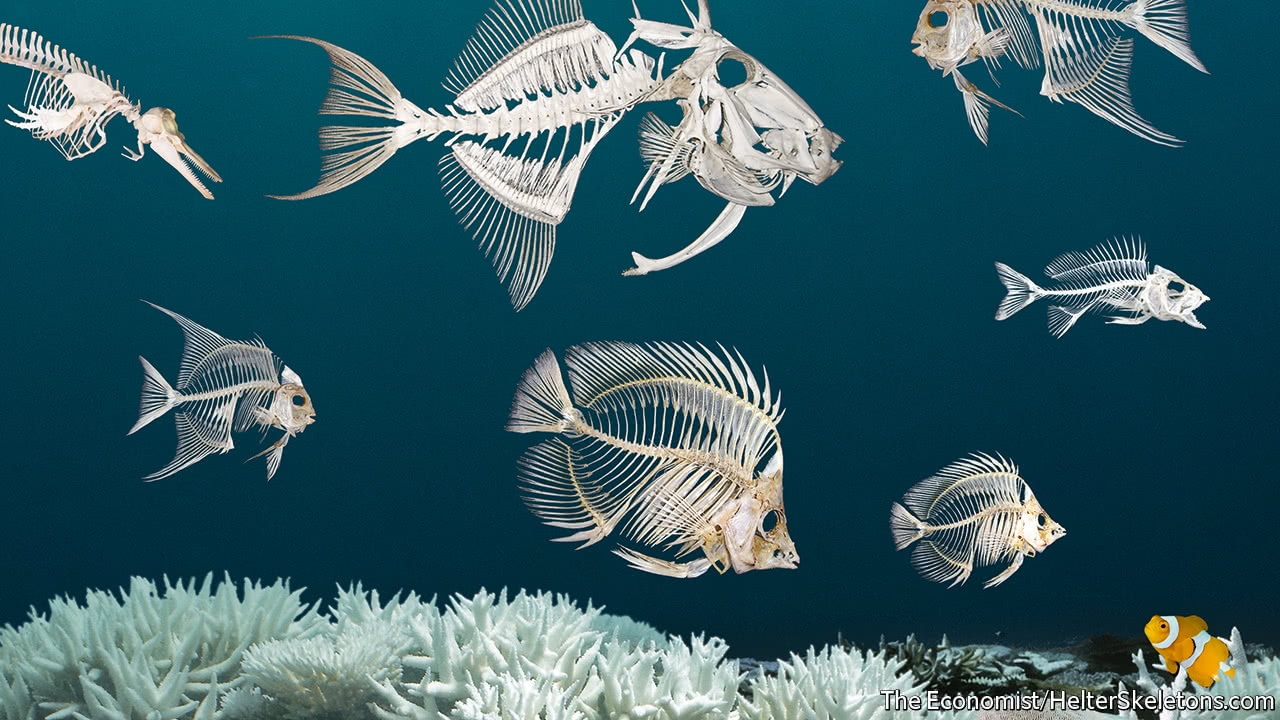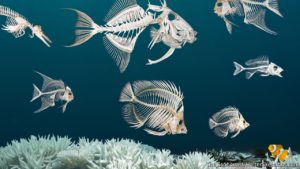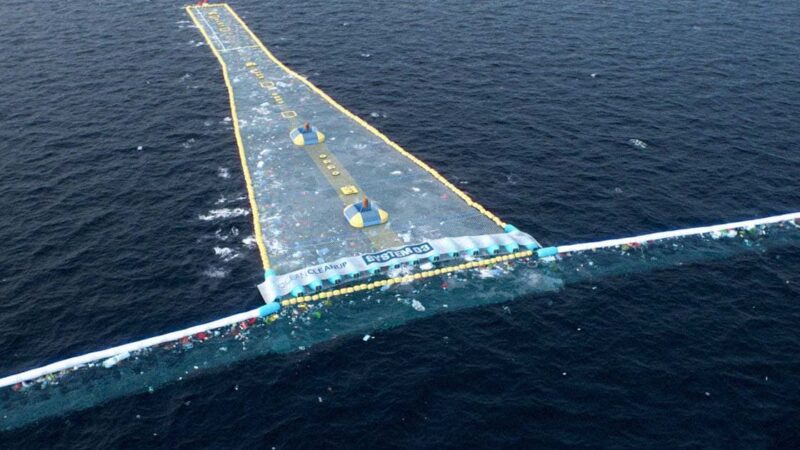Print edition | Leaders
The ocean sustains humanity. Humanity treats it with contempt
EARTH is poorly named. The ocean covers almost three-quarters of the planet. It is divided into five basins: the Pacific, the Atlantic, the Indian, the Arctic and the Southern oceans. Were all the planet’s water placed over the United States, it would form a column of liquid 132km tall. The ocean provides 3bn people with almost a fifth of their protein (making fish a bigger source of the stuff than beef). Fishing and aquaculture assure the livelihoods of one in ten of the world’s people. Climate and weather systems depend on the temperature patterns of the ocean and its interactions with the atmosphere. If anything ought to be too big to fail, it is the ocean.
Humans have long assumed that the ocean’s size allowed them to put anything they wanted into it and to take anything they wanted out. Changing temperatures and chemistry, overfishing and pollution have stressed its ecosystems for decades. The ocean stores more than nine-tenths of the heat trapped on Earth by greenhouse-gas emissions. Coral reefs are suffering as a result; scientists expect almost all corals to be gone by 2050.
By the middle of the century the ocean could contain more plastic than fish by weight. Ground down into tiny pieces, it is eaten by fish and then by people, with uncertain effects on human health. Appetite for fish grows nevertheless: almost 90% of stocks are fished either at or beyond their sustainable limits (see Briefing). The ocean nurtures humanity. Humanity treats it with contempt.
Depths plumbed
Such self-destructive behaviour demands explanation. Three reasons for it stand out. One is geography. The bulk of the ocean is beyond the horizon and below the waterline. The damage being done to its health is visible in a few liminal places—the Great Barrier Reef, say, or the oyster farms of Washington state. But for the most part, the sea is out of sight and out of mind. It is telling that there is only a single fleeting reference to the ocean in the Paris agreement on climate change.
A second problem is governance. The ocean is subject to a patchwork of laws and agreements. Enforcement is hard and incentives are often misaligned. Waters outside national jurisdictions—the high seas—are a global commons. Without defined property rights or a community invested in their upkeep, the interests of individual actors in exploiting such areas win out over the collective interest in husbanding them. Fish are particularly tricky because they move. Why observe quotas if you think your neighbour can haul in catches with impunity?
Third, the ocean is a victim of other, bigger processes. The emission of greenhouse gases into the atmosphere is changing the marine environment along with the rest of the planet. The ocean has warmed by 0.7°C since the 19th century, damaging corals and encouraging organisms to migrate towards the poles in search of cooler waters. Greater concentrations of carbon dioxide in the water are making it more acidic. That tends to harm creatures such as crabs and oysters, whose calcium carbonate shells suffer as marine chemistry alters.
Some of these problems are easier to deal with than others. “Ocean blindness” can be cured by access to information. And indeed, improvements in computing power, satellite imaging and drones are bringing the ocean into better view than ever before. Work is under way to map the sea floor in detail using sonar technology. On the surface, aquatic drones can get to remote, stormy places at a far smaller cost than manned vessels. From above, ocean-colour radiometry is improving understanding of how phytoplankton, simple organisms that support marine food chains, move and thrive. Tiny satellites, weighing 1-10kg, are enhancing scrutiny of fishing vessels.
Transparency can also mitigate the second difficulty, of ocean governance. More scientific data ought to improve the oversight of nascent industries. As sea-floor soundings proliferate, the supervision of deep-sea mining, which is overseen by the International Seabed Authority in areas beyond national jurisdiction, should get better. More data and analysis also make it easier to police existing agreements. Satellite monitoring can provide clues to illegal fishing activity: craft that switch off their tracking devices when they approach a marine protected area excite suspicion, for example. Such data make it easier to enforce codes like the Port State Measures Agreement, which requires foreign vessels to submit to inspections at any port of call and requires port states to share information on any suspected wrongdoing they find.
Clearer information may also help align incentives and allow private capital to reward good behaviour. Insurance firms, for instance, have an incentive to ask for more data on fishing vessels; if ships switch off their tracking systems, the chances of collisions rise, and so do premiums. Greater traceability gives consumers who are concerned about fish a way to press seafood firms into behaving responsibly.
Sunk costs
Thanks to technology, the ocean’s expanse and remoteness are becoming less formidable—and less of an excuse for inaction. A UN meeting on the ocean next month in New York is a sign that policymakers are paying more attention to the state of the marine realm. But superior information does not solve the fundamental problem of allocating and enforcing property rights and responsibilities for the high seas. And the effectiveness of incentives to take care of the ocean varies. Commercial pay-offs from giving fish stocks time to recover, for example, are large and well-documented; but the rewards that accrue from removing plastic from the high seas are unclear.
Above all, better measurement of global warming’s effect on the ocean does not make a solution any easier. The Paris agreement is the single best hope for protecting the ocean and its resources. But America is not strongly committed to the deal; it may even pull out. And the limits agreed on in Paris will not prevent sea levels from rising and corals from bleaching. Indeed, unless they are drastically strengthened, both problems risk getting much worse. Mankind is increasingly able to see the damage it is doing to the ocean. Whether it can stop it is another question.




